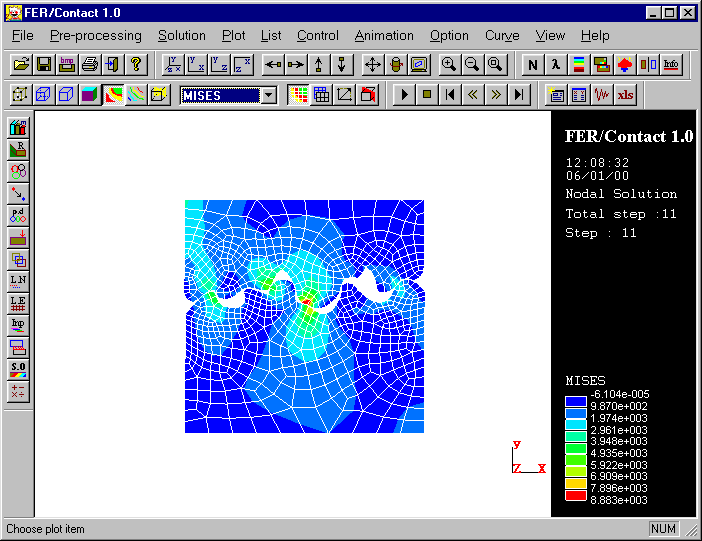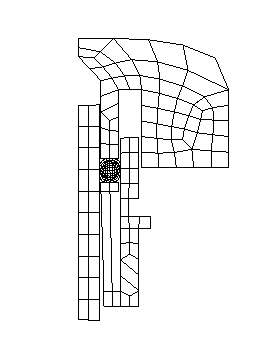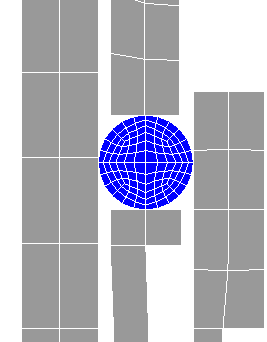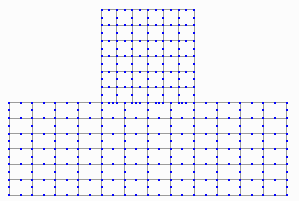FER/Contact 1.0
FER/Contact is
a complete package devoted to the modelling of frictional contact problems.
The pre/postprocessor and the solver are developed using C++ Object Oriented
Programming, MFC and OpenGL graphical tools on the platform Windows 98/NT.
The code FER/Contact is capable of handling a wide range of engineering
applications. These include situations in which:
-
the contact occurs between two or more deformable bodies or between deformable
bodies and rigid bodies in two or three dimension problems, the constitutive
law of deformable bodies being linear or non linear with large deformations
and large displacements;
-
the contact may be sticking or sliding, with or without Coulomb friction;
-
the repeated "contact<->non contact" and "sticking<->sliding" are
permitted;
-
the relative displacement between contact bodies can be large;
-
the contact surface can have small curvature radius, and even sharp corners.
The bipotential method proposed by De Saxcé and Feng has be used
to deal with the contact problem with Coulomb's friction in this software.
Some characteristics of the bipotential method:
-
the unilateral contact and the friction are coupled via a contact bipotential.
This variational approach is more efficient and more simpler than the classical
one that involves two variational principles and two inequalities utilized
respectively for unilateral contact and friction.
-
the semi-analytical formula have been developped so that the contact reactions
can be obtained accurately and contact Signorini's conditions and friction
laws are satisfied.
-
the frictional contact problem is treated in a reduced system and the global
finite element stiffness matrix is not changed as opposited to the penalty
method or to the Lagrangian multiplier method. This makes it easy to implement
the contact and friction calculation in an existing finite element software.
-
the method neither augments the degrees of freedom nor changes the global
stiffness matrix. It is specially suitable for solution of large system.




 Return
to principal page
Return
to principal page







